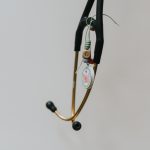Share
Spiders are scary. Complaints don’t have to be
Back to MessengerRead time: 3 minutes
Find out more about CPSA’s complaints process in our latest Professional Conduct Corner
By Deema AbouRizk, CPSA Associate Complaints Director
I know this might be controversial, but complaints are not necessarily a bad thing. They help us maintain the high standards expected of the profession and support physicians in providing the best patient care. But let’s be honest—they are hard to face and no one wants to receive one. Receiving a complaint can be unsettling and it’s natural to feel anxious about the process.
Fearing a complaint is normal, but it’s important to remember you’re not alone. For some physicians, your only exposure to CPSA’s complaints process may be reading about the most serious complaints that are published in The Messenger after going to a hearing tribunal (which only accounts for 1-2% of the complaints we receive). The reality is that complaints are more common than you may think, and most physicians will probably receive at least one at some point in their careers.
The complaints process: what to expect
As part of our process, when a complaint is received, a copy is sent to the physician via their secure CPSA Portal, along with instructions on what to do next. The process may feel daunting, but support is available through the Canadian Medical Protective Association (CMPA) and the Alberta Medical Association (AMA)’s Physician Family and Support Program.
The first step is submitting an initial response to the complaint, outlining your perspective and side of the story. You’ll also be asked to provide any relevant patient records related to the complaint.
In over 50 per cent of cases, complaints are dismissed after CPSA’s Complaints Director reviews the physician’s initial response. For example:
A patient files a complaint about her family physician, stating that after her last appointment, he refused to see her again without any explanation. The physician responds to the complaint by providing records from the patient’s last appointment, noting that the patient was found harassing a staff member after having been advised of their office’s zero tolerance policy for abuse following a previous incident. After reviewing the physician’s initial response, the complaint is dismissed.
In cases where the allegations are serious and more information is needed after the initial response so the Complaints Director can make an informed decision, a formal investigation may be ordered. Investigations involve interviews with the complainant and physician, and collecting additional documents and evidence. In cases where clinical care is in question, the Complaints Director can also seek an expert opinion on whether the care provided aligns with CPSA’s Standards of Practice. For example:
After undergoing a hair transplant, a patient complains about his surgeon because he is experiencing ongoing pain and swelling. His surgeon responds to the complaint by providing the patient records from the procedure, advising that these are common side effects that were explained to the patient. An independent surgeon reviews the patient’s records, including proof of informed consent, and confirms that the procedure was performed in line with the expected standards of practice. The complaint is dismissed after the expert opinion.
The next most common complaint outcome is resolution. In less complex cases, resolution can occur at any point during the process. Resolutions vary depending on the circumstances, but often involve learning requirements, apologies, reflections, or practice improvements for the physician. Both the complainant and the physician can provide input on resolution and must agree to the final terms. For example:
A patient files a complaint about her general practitioner for comments he made about abstinence and religion when she was seeking an IUD. In his initial response, the physician acknowledges his lapse in judgement and extends an apology to the patient. The physician agrees to complete a course on patient-centered communication, to learn how to communicate with patients impartially about sensitive issues in the future. The patient is satisfied with this outcome and the complaint is resolved after the initial response.
The importance of patient safety and physician well-being
The goal of our complaints process is to identify physicians in need of support and in rare instances, who pose risks to public safety. While disciplinary measures are used when needed, they are a last resort and reserved for the most serious cases. Most complaints can be readily and confidentially processed and offer learning opportunities for regulated members, so they can improve their practice moving forward. The goal is to address concerns fairly, with the physician’s well-being, the integrity of the profession and patient safety in mind.
It’s normal to feel anxious about complaints, but they are a normal and important part of the practice of medicine. For more information about our complaints process, please visit our website.
Related News
All News & EventsDecember 12, 2024
Medical expertise and investigation skills: A dynamic combination
September 5, 2024
Improving your annual renewal—we can’t do it without you!
September 5, 2024
Professional Conduct reports – September 2024
September 5, 2024




















Comments for this post are now closed. If you would like to share your feedback on this topic, please email support@cpsa.ca.